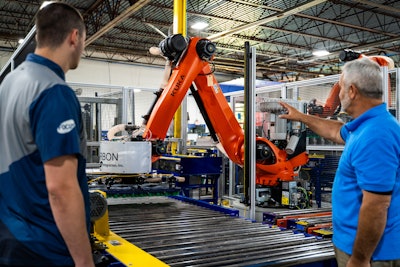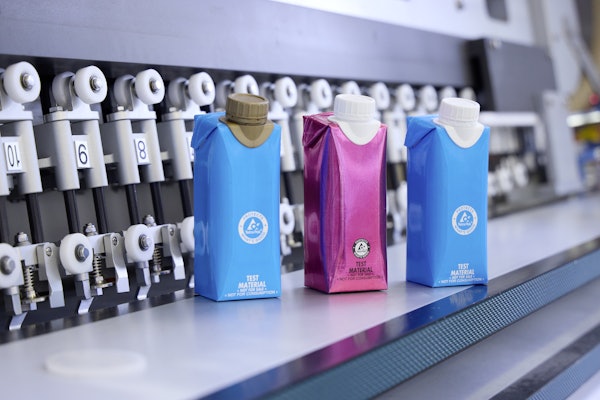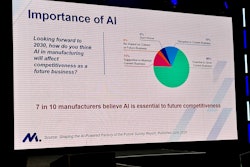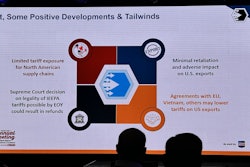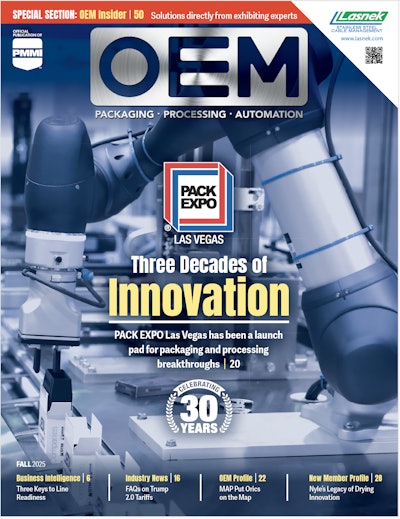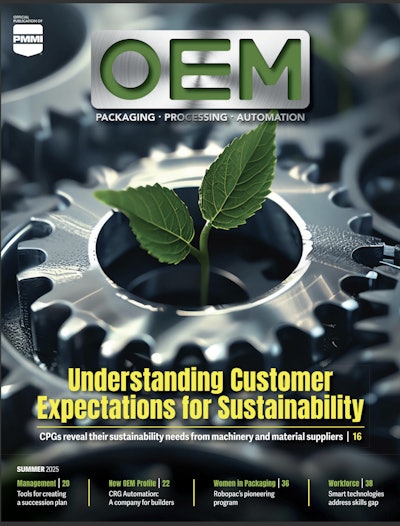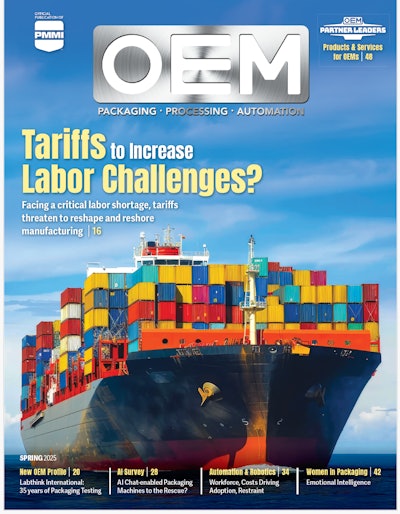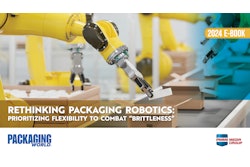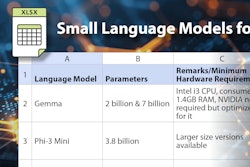During a time when fulfilling any open packaging and processing jobs poses a challenge, palletizing positions might be one of the positions least desirable. Palletizing is difficult, dangerous work that can take workers many feet up into the air to stack products off the production line or to service and maintain palletizing equipment. The work is challenging, physically taxing, and often takes place in complex environments. That doesn’t change the fact that if the product doesn’t get off the end of the line, the line stops.
To address labor challenges and boost productivity, manufacturers are turning to modular robotic palletizing cells. These cells consist of pre-engineered and custom-designed modules assembled to meet specific application needs. Modular palletizing cells are efficient and easy to integrate into production lines, allowing integrators to install an automated palletizing system within days or hours, depending on the size and complexity of the unit, with minimal impact on the company’s production.
Automation outclasses human hands
FOCUS Integration, a Westland, Michigan-based integrator, goes a step further, claiming robots are far superior to manual palletizing and traditional palletizer equipment in virtually all respects. The company provides custom solutions, focusing on two core modular systems that provide manufacturers with proven palletizing solutions.
“Our customer base has been having difficulty finding workers,” said FOCUS owner and president Dean Roberts. “Palletizing is hard work, and people don’t want to be stacking 50-pound, 100-pound products all day long. There’s a very high amount of turnover.”
To meet its customers’ challenges with labor problems and the need for increased productivity, FOCUS designed two modular palletizing solutions instead of a one-size-fits-all approach. The company’s CARBON palletizing cell uses pre-engineered and custom-designed modules configured and assembled to customer specifications at FOCUS, tested and verified on the FOCUS floor, then shipped to the customer for commissioning.
FOCUS uses KUKA’s KR 140, 180, and 210 QUANTEC-2 PA as its standard robot models for its CARBON solution, depending on the application and customer requirements. QUANTEC series robots provide 6-axis capability in a small footprint that simplifies cell system planning. Roberts notes that because the QUANTEC does not use grease as a lubricant, maintenance is as easy as changing the oil in a car.
CARBON’s smaller sibling unit, CUBE, is a compact robotic palletizer designed to be a cost-effective palletizing solution. The smaller CUBE cells feature the 6-axis KR 50 and KR 70 IONTEC medium payload models. Like its larger counterpart, IONTEC provides a highly flexible solution with the best work envelope in its class.
CARBON modules are built on pre-wired structural platforms that piece together like a puzzle and include robot, conveyor systems, safety fencing, and all equipment necessary for a turnkey solution. The company states that it can have its CARBON solution up and running at a customer’s facility in a single day and the CUBE within a few hours.
“Robots bring flexibility and low maintenance,” Roberts said. “Everything is maintained at floor level, unlike conventional, high-level palletizing machines. You get a smaller footprint at a very competitive price, and they can be reconfigured and moved, if necessary, to another line.”
Software drives the solution
To commission new cells, FOCUS engineers use KUKA.WorkVisual engineering suite and KUKA.Sim smart simulation software. The KUKA.WorkVisual suite checks for logic errors while programming steps are being carried out and provides an intuitive platform for configuring, programming, commissioning, and diagnosing systems. KUKA.Sim smart simulation software for offline programming depicts robot sequences prior to bringing them online, allowing engineers to ensure the system will work as designed and anticipated.
KUKA.SafeOperation is another feature FOCUS uses to ensure customers receive a reliable and safe solution, as the software allows shops to reduce their cell space requirements by modeling end-of-arm tooling with six user-defined spheres that move with the robot. The software permanently monitors the cell as configured in the program, and if a sphere touches the limits of the cell, the robot safely stops. The software accurately monitors axis velocities and accelerations and Cartesian velocities in up to 16 configurable spaces within a fixed cell area.
Once cells are installed and operating, KUKA.RemoteSupportView provides customers with online support for robot controllers through a reliable client-server connection. The program allows secure access for maintenance and troubleshooting from a remote computer.
Looking to the future, Focus is centered on meeting the rising demand for palletizing and continuing to stack successes one cell at a time.
“Demand for our systems has gone through the roof, and the need for automation in palletizing and packaging will only continue to grow,” Roberts said.
